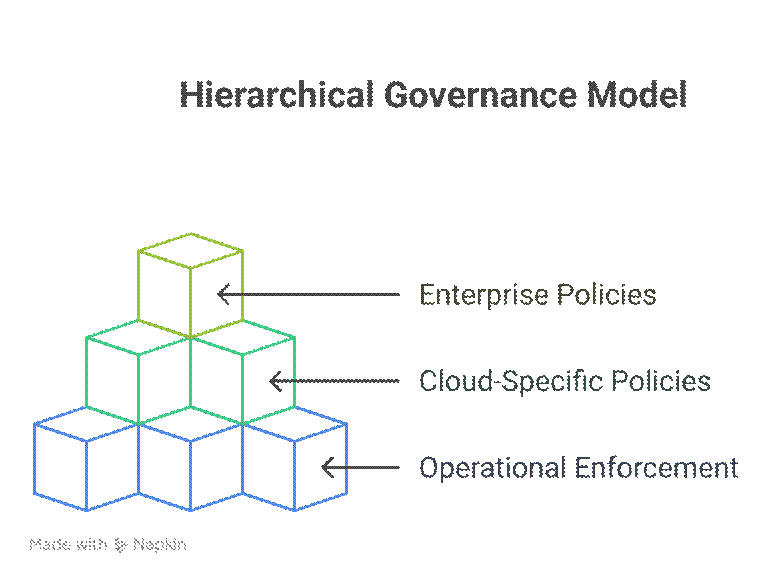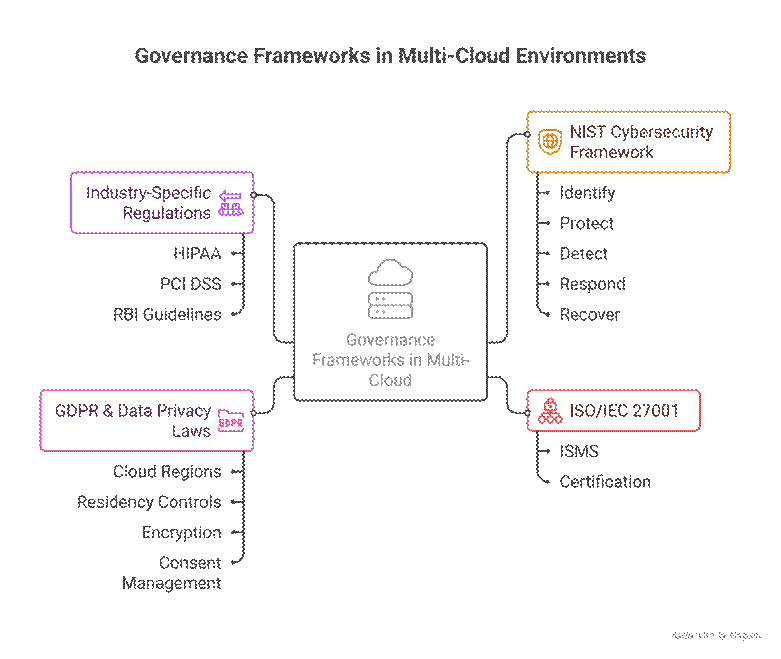Introduction
Cloud adoption changes more than just infrastructure — it also changes legal and compliance responsibilities.
When companies move to cloud platforms like AWS, Azure, and GCP, they share responsibility with the provider but are still fully accountable for data privacy, security, and compliance.
In a multi-cloud setup, strong governance is essential to avoid fines, data breaches, and reputation damage.
At CuriosityTech.in in Nagpur, engineers and leaders take part in hands-on compliance simulations, learning how to apply global regulations to real-world cloud systems.
Section 1 – The Compliance Challenge in Multi-Cloud
Key Challenges for Enterprises in Cloud Compliance:
Vendor Lock-in Risks
Compliance processes should work across all cloud providers to avoid being stuck with one vendor
Tool Fragmentation
Each cloud provider (AWS, Azure, GCP) offers different compliance tools, making management harder.
Jurisdictional Laws
Companies must follow different laws in different regions, like GDPR (Europe), HIPAA (USA), and RBI rules (India).
Audit Complexity
Using multiple cloud providers creates separate audit trails, making compliance checks more complex.
Section 2 – Compliance Landscape Comparison
| Compliance Category | AWS | Azure | GCP |
| Certifications | ISO 27001, SOC 1/2/3, FedRAMP, HIPAA | ISO 27001, GDPR, SOC, FedRAMP High | ISO 27001, GDPR, HIPAA, FedRAMP |
| Data Residency | AWS Outposts, Local Zones | Azure Sovereign Cloud, EU Data Boundary | GCP Regional Data Residency Controls |
| Identity & Access | IAM, GuardDuty, Control Tower | Entra ID (AAD), Defender for Cloud | IAM, BeyondCorp Zero Trust |
| Audit Tools | AWS Audit Manager, CloudTrail | Azure Policy, Compliance Manager | Cloud Audit Logs, Policy Intelligence |
| Encryption | KMS, CloudHSM | Key Vault | CMEK, Cloud KMS |
Section 3 – Hierarchical Governance Model (Diagram Description)

Section 4 – Governance Frameworks in Multi-Cloud

Section 5 – Enterprise Governance Strategies
Solutions to Cloud Compliance Challenges:
Automated Compliance Audits
Run regular, automated policy-as-code checks to ensure continuous compliance with regulations.
Unified Policy Management
Use tools like HashiCorp Sentinel and Cloud Custodian to apply consistent policies across all cloud platforms.
Cross-Cloud Monitoring
Set up centralized dashboards with tools like Datadog or Splunk to monitor all environments in one place.
Zero Trust Security Model
Strengthen security by combining tools like Azure Entra ID, AWS IAM Federation, and GCP BeyondCorp to verify every access request.
Section 6 – Case Example (CuriosityTech Training Project)
During a CuriosityTech lab project in Nagpur, learners practice:
Running audit checks with CloudTrail, Azure Compliance Manager, and GCP Policy Analyzer.
Hosting healthcare data on both AWS and Azure.
Applying HIPAA compliance rules.
Using Terraform to enforce encryption policies in both clouds.
Section 7 – Roadmap to Becoming a Multi-Cloud Compliance Expert
Steps to Master Cloud Compliance:
Build cross-jurisdiction expertise
Learn to handle compliance across regions like India (RBI), Europe (GDPR), and USA (HIPAA).
Learn key regulations
Understand major rules like GDPR, HIPAA, and PCI DSS.
Use cloud-native governance tools
Work with tools like AWS Audit Manager, Azure Policy, and GCP Policy Intelligence.
Adopt policy-as-code
Use tools like OPA and Terraform Sentinel to automate compliance.
Practice multi-cloud audits
Run compliance simulations in training labs.
Conclusion
Compliance and governance are no longer things to worry about later—they are now essential for keeping organizations safe in multi-cloud setups. They protect against fines, security breaches, and chaos.
By using clear governance models, automated policy checks, and a unified approach to compliance, companies can confidently run workloads on AWS, Azure, and GCP.
AtCuriosityTech.in, we teach engineers to view compliance not as a hassle, but as a strength. Those who master governance will build the trusted cloud systems of the future.

